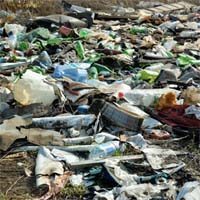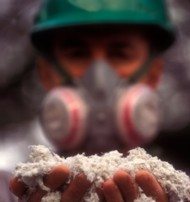The Hidden Danger of Asbestos Removal: Air Pollution

Asbestos, once used in building construction, poses health risks. Removing it safely is important. A recent study looks at a problem caused by poorly done asbestos removal – pollution.
Focus of the Study
A new study looks at what happens after asbestos is removed. It focuses on what happens when there is not enough vacuum in the work area. This leads to dust escaping, polluting the air not just in the work area but also up to 15 meters away.
The study shows that when work areas are not sealed properly, asbestos dust gets into the air outside. This can be dangerous for people near the building being renovated. For example, removing non-friable asbestos-cement sheets can increase contamination outside.
Removing friable asbestos in some buildings can lead to high contamination levels. These levels are higher than what is considered safe, raising concerns about health risks for the public.
Long-term Presence of Asbestos Dust
One worrying finding is that asbestos dust can stay in buildings even after removal work is finished. This means that even after a long time, there could still be a risk to people in the building who were not protected during the removal process.
Breathing in asbestos fibers can cause mesothelioma. Treating mesothelioma is tough, and there’s no one-size-fits-all solution. Different treatments, like chemotherapy or radiation, can be used alone or together. Surgery might also be an option for some patients, especially in the early stages of the disease.
But getting the proper treatment can be really complicated. Sometimes, by the time someone is diagnosed, the cancer has already spread a lot, making it harder to treat. And since mesothelioma is rare, not all doctors might know the best ways to manage it.
The study warns that not only workers but also people using or living in buildings during or after asbestos removal could be at risk. Long-term exposure to even low levels of asbestos dust can lead to serious health problems.
Difficulty in Checking Removal Quality
It is hard to know if asbestos removal was done well because there are no clear limits for how much dust can leak out during removal or how much contamination can be left after. Traditional tests done after removal may not show if there were mistakes made during the process. This raises concerns about how accurately we can assess if a building is safe after asbestos removal.
Removing asbestos from buildings is important for safety, but we must also consider the environmental impacts of how it’s done. The new study shows the need for strict rules, like sealed work areas and good vacuum systems, to stop asbestos dust from spreading. To protect public health, we need not just to remove asbestos but also to do it carefully. By learning more and promoting safe asbestos removal practices, we can reduce the risks of this harmful material.
Source:
“Environmental Pollution as a Result of a Vacuum Deficit in the Working Areas during Asbestos Removal Work.,” January 29, 2024. https://doi.org/10.21203/rs.3.rs-3787384/v1. Under Peer-Review.





